Business
America’s Largest And Most Expensive DEI Program Is About To Go Up In Flames
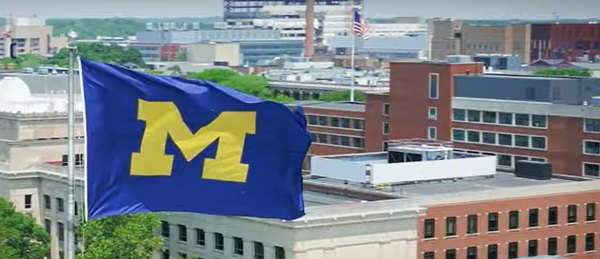
The flag of the University of Michigan
 From the Daily Caller News Foundation
From the Daily Caller News Foundation
By Jaryn Crouson
The University of Michigan’s (UM) multi-million dollar diversity, equity and inclusion (DEI) program may soon be dismantled.
The university’s board of regents has reportedly asked UM president Santa Ono “to defund or restructure” the DEI office amid growing criticism and public pressure, according to emails shared on X. The board is expected to vote on the matter on Dec. 5.
“I write to share information with you about impending threats to the University of Michigan’s DEI programming and core values of diversity, equity, and inclusion,” Rebekah Modrak, faculty senate chair, wrote in an email to faculty senate members. “It has been confirmed by multiple sources that the Regents met earlier this month in a private meeting with a small subgroup of central leadership members, and among the topics discussed was the future of DEI at UM, including the possibility of defunding DEI in the next fiscal year.”
Calls for the university’s DEI program to come to a close surfaced after The New York Times exposed its failures and the vast amount of money being thrown at it.
“In recent years, as D.E.I. programs came under withering attack, Michigan has only doubled down on D.E.I., holding itself out as a model for other schools,” the NYT wrote in an October article. “By one estimate, the university has built the largest D.E.I. bureaucracy of any big public university. But an examination by The Times found that Michigan’s expansive — and expensive — D.E.I. program has struggled to achieve its central goals even as it set off a cascade of unintended consequences.”
Despite UM investing $250 million into DEI since 2016, students and faculty have reported a deteriorating campus climate since the program began and are less likely to interact with people of a different race, religion or political ideology, though these are “the exact kind of engagement[s] D.E.I. programs, in theory, are meant to foster,” the article stated. Attempts to create a more diverse campus also fell flat, with black enrollment at the university remaining a steady 5%.
The program also created a “culture of grievance,” with the office’s conception coinciding with an “explosion” of complaints on campus involving race, gender and religion, the NYT reported. Meanwhile, nearly 250 university employees were engaged in some form of DEI efforts on campus.
Modrak in her email referenced the article, calling it a “tendentious attack” that was “not well researched,” and claiming that the author “cherry-picked” examples of UM’s failures.
DEI staff cost the university approximately $30.68 million annually, with the average salary reaching $96,400, according to Mark Perry, an American Enterprise Institute scholar. Several DEI employees are paid more than $200,000 a year, while the department’s head makes upwards of $400,000.
“I think that across the ideological spectrum both regular citizens and policymakers have really shifted on issues of identity politics,” John Sailer, senior fellow and director of higher education policy at the Manhattan Institute, told the Daily Caller News Foundation. “I think a lot of people who would have at some point, probably just as a matter of knee-jerk reaction, supported diversity initiatives, have started to really reconsider what these initiatives are actually doing, and reconsider whether everything that falls under the name of DEI is actually something that they support. And so there was already the slow burn.”
The major catalyst of this change, Sailer explained, was the series of fiery protests that ravaged college campuses across the country after Hamas’ deadly Oct. 7, 2023 attack on Israel, which were “absolutely a big part of the story.”
“A lot of people were already skeptical of DEI,” Sailer said. “A lot of people were already of the opinion that these policies, even though they purport to be about diversity, in practice really have been about a particular ideological vision for higher ed. Then on October 7, I think a whole different part of the American electorate and a whole different constituency, many more people from the professional world looked at universities and thought, What on earth is going on? What is the problem here?”
The University of Michigan, like many other schools, was overwhelmed by violent protests that resulted in several arrests and criminal charges being filed against 11 students and alumni.
“It became clear that a part of the problem was we have these massive bureaucracies that should ostensibly promote treating people well,” Sailer continued. “And it was in fact a lot of people most involved with the DEI complex who were supporting these kind of radically anti-Israel, radically anti-West, at times, rudely antisemitic demonstrations.”
The reelection of former president Donald Trump on Nov. 5 likely played no small role in this shift either.
“I think now every elected official is aware that there’s something of a popular mandate to reform higher education, and that mandate existed before Trump was elected in 2024, but there’s also a kind of popular rebuke of the progressive identity politics,” Sailer said. “I have to think that the conversation that the University of Michigan’s regents are having about DEI would be different if there had not been this nationwide rebuke of identity politics that the election of Trump seems to represent.”
Trump has promised many reforms to the education sector, including abolishing the Department of Education entirely. The president-elect has also vowed to bring peace to Israel and Gaza and said that such efforts would help curb the rise in antisemitism in the U.S.
While several other schools have begun to dismantle DEI offices across the country, some in response to state laws barring the departments and policies, the case at the University of Michigan is unique. Most efforts thus far have been led by Republican lawmakers, such as in Texas and Florida, but in the blue state of Michigan, the university’s highest governing body is comprised almost entirely of Democrats.
“The fact that University of Michigan is an institution controlled by elected Democrats, the fact that its Board of Regents would consider doing something like this, I think it signals a broader shift,” Sailer said. “It’s a huge deal for the University of Michigan to even have this kind of reform on the table. It’s a huge deal because the University of Michigan is the exemplar when it comes to DEI. If the University of Michigan makes this decision, that marks a big shift.”
This move by the university could signal others to follow suit.
“It could be just a massive step towards broader higher education reform,” Sailer told the DCNF.
UM and the Board of Regents did not immediately respond to the DCNF’s request for comment.
Agriculture
Liberal win puts Canada’s farmers and food supply at risk

This article supplied by Troy Media.
A fourth Liberal term means higher carbon taxes and trade risks. Could Canada’s farmers and food security be on the line?
The Liberal Party, now led by Mark Carney, has secured a fourth consecutive term, albeit once again with a minority mandate. This time, however, the Liberals have a stronger hand, as they can rely not only on the NDP but also the Bloc Québécois to maintain power.
This broader base of parliamentary support could provide much-needed political stability at a crucial time, particularly as Canada prepares for a new round of trade negotiations with the United States and Mexico.
For the agri-food sector, the implications are significant. From carbon taxes to trade rules, federal decisions play a decisive role in shaping the costs and risks Canadian farmers face.
First and foremost, carbon pricing will remain a central issue. Carney has made it clear that the industrial carbon tax will stay—a policy that continues to erode the competitiveness of Canada’s agri-food sector, where fuel, fertilizer and transportation costs are especially sensitive to carbon pricing. The tax, currently set at $95 per metric tonne, is scheduled to climb to $170 by 2030.
While consumers may not see this tax directly, businesses certainly do. More concerning is the Liberals’ intention to introduce a border carbon adjustment for imports from countries without equivalent carbon pricing regimes. While this could theoretically protect Canadian industry, it also risks making food even more expensive for Canadian consumers, particularly if the U.S., our largest trading partner, remains uninterested in adopting similar carbon measures. Acting alone risks undermining both our food security and our global competitiveness.
Another looming issue is supply management. Although all parties pledged during the campaign not to alter Canada’s system for dairy, poultry and eggs, this framework—built on quotas and high import tariffs—is increasingly outdated. It is almost certain to come under pressure during trade negotiations. The American dairy lobby, in particular, will continue to demand greater access to Canadian markets. The Liberals have a chance to chart a more forward-looking path. Modernizing supply management could lead to a more competitive, resilient industry while providing consumers with greater choice and better prices.
The previous Parliament’s passage of Bill C-282, which sought to shield supply managed sectors from all future trade negotiations, was a deeply flawed move.
Fortunately, the new parliamentary makeup should make it far less likely that such protectionist legislation will survive. A more pragmatic approach to trade policy appears possible.
On the domestic front, there are reasons for cautious optimism. The Liberals have promised to eliminate remaining federal barriers to interprovincial trade and to improve labour mobility, longstanding obstacles to the efficient movement of agri-food products across Canada. For example, differing provincial rules often prevent products like cheese, meat or wine from being sold freely across provinces, frustrating farmers and limiting consumer choice. Momentum was building before the election, and it must continue if we are serious about building a stronger domestic food economy.
Infrastructure investment is another bright spot. The Liberals pledged more than $5 billion through a Trade Diversification Corridor Fund to upgrade Canada’s severely undercapitalized export infrastructure. Strategic investment in trade gateways is overdue and critical for agri-food exporters looking to reduce reliance on the United States and expand into global markets.
Finally, the Liberal platform was alone in explicitly committing to support food processing in Canada, a crucial pillar of domestic food security. An increased focus on manufacturing will not only create jobs but also reduce reliance on imported food products, making Canada more resilient in the face of global disruptions.
Farmers have long felt sidelined by urban-centric Liberal governments. The past four years were marked by regulatory and trade clashes that deepened that divide. The hope now is that with greater political stability and a clearer focus on competitiveness, the next four years will bring a more constructive relationship between Ottawa and Canada’s agri-food sector.
If the Liberals are serious about food security and economic growth, now is the time to reset the relationship with Canada’s farmers, not ignore them yet again.
Dr. Sylvain Charlebois is a Canadian professor and researcher in food distribution and policy. He is senior director of the Agri-Food Analytics Lab at Dalhousie University and co-host of The Food Professor Podcast. He is frequently cited in the media for his insights on food prices, agricultural trends, and the global food supply chain.
Troy Media empowers Canadian community news outlets by providing independent, insightful analysis and commentary. Our mission is to support local media in helping Canadians stay informed and engaged by delivering reliable content that strengthens community connections and deepens understanding across the country.
Business
Trump’s bizarre 51st state comments and implied support for Carney were simply a ploy to blow up trilateral trade pact
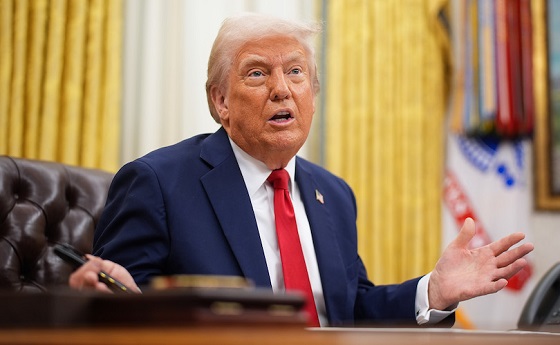
From LifeSiteNews
Trump’s position on the Canadian election outcome had nothing to do with geopolitical friendships and everything to do with America First economics.
Note from LifeSiteNews co-founder Steve Jalsevac: This article, disturbing as it is, appears to explain Trump’s bizarre threats to Canada and irrational support for Carney. We present it as a possible explanation for why Trump’s interference in the Canadian election seems to have played a large role in the Liberals’ exploitation of the Trump threat and their ultimate, unexpected success.
To understand President Trump’s position on Canada, you have to go back to the 2016 election and President Trump’s position on the North American Free Trade Agreement (NAFTA) renegotiation. If you did not follow the subsequent USMCA process, this might be the ah-ha moment you need to understand Trump’s strategy.
During the 2016 election President Trump repeatedly said he wanted to renegotiate NAFTA. Both Canada and Mexico were reluctant to open the trade agreement to revision, but ultimately President Trump had the authority and support from an election victory to do exactly that.
In order to understand the issue, you must remember President Trump, Commerce Secretary Wilbur Ross, and U.S. Trade Representative Robert Lighthizer each agreed that NAFTA was fraught with problems and was best addressed by scrapping it and creating two separate bilateral trade agreements. One between the U.S. and Mexico, and one between the U.S. and Canada.
In the decades that preceded the 2017 push to redo the trade pact, Canada had restructured their economy to: (1) align with progressive climate change; and (2) take advantage of the NAFTA loophole. The Canadian government did not want to reengage in a new trade agreement.
Canada has deindustrialized much of their manufacturing base to support the “environmental” aspirations of their progressive politicians. Instead, Canada became an importer of component goods where companies then assembled those imports into finished products to enter the U.S. market without tariffs. Working with Chinese manufacturing companies, Canada exploited the NAFTA loophole.
Justin Trudeau was strongly against renegotiating NAFTA, and stated he and Chrystia Freeland would not support reopening the trade agreement. President Trump didn’t care about the position of Canada and was going forward. Trudeau said he would not support it. Trump focused on the first bilateral trade agreement with Mexico.
When the U.S. and Mexico had agreed to terms of the new trade deal and 80 percent of the agreement was finished, representatives from the U.S. Chamber of Commerce informed Trudeau that his position was weak and if the U.S. and Mexico inked their deal, Canada would be shut out.
The U.S. Chamber of Commerce was upset because they were kept out of all the details of the agreement between the U.S. and Mexico. In actuality, the U.S. CoC was effectively blocked from any participation.
When they went to talk to the Canadians the CoC was warning them about what was likely to happen. NAFTA would end, the U.S. and Mexico would have a bilateral free trade agreement (FTA), and then Trump was likely to turn to Trudeau and say NAFTA is dead, now we need to negotiate a separate deal for U.S.-Canada.
Trudeau was told a direct bilateral trade agreement between the U.S. and Canada was the worst possible scenario for the Canadian government. Canada would lose access to the NAFTA loophole and Canada’s entire economy was no longer in a position to negotiate against the size of the U.S. Trump would win every demand.
Following the warning, Trudeau went to visit Nancy Pelosi to find out if Congress was likely to ratify a new bilateral trade agreement between the U.S. and Mexico. Pelosi warned Trudeau there was enough political support for the NAFTA elimination from both parties. Yes, the bilateral trade agreement was likely to find support.
Realizing what was about to happen, Prime Minister Trudeau and Chrystia Freeland quickly changed approach and began to request discussions and meetings with USTR Robert Lighthizer. Keep in mind more than 80 to 90 percent of the agreement was already done by the U.S. and Mexico teams. Both President Andres Manuel Lopez Obrador and President Trump were now openly talking about when it would be finalized and signed.
Nancy Pelosi stepped in to help Canada get back into the agreement by leveraging her Democrats. Trump agreed to let Canada engage, and Lighthizer agreed to hold discussions with Chrystia Freeland on a tri-lateral trade agreement that ultimately became the USMCA.
The key points to remember are: (1) Trump, Ross, and Lighthizer would prefer two separate bilateral trade agreements because the U.S. import/export dynamic was entirely different between Mexico and Canada. And because of the loophole issue, (2) a five-year review was put into the finished USMCA trade agreement. The USMCA was signed on November 30, 2018, and came into effect on July 1, 2020.
TIMELINE: The USMCA is now up for review (2025) and renegotiation in 2026!
This timeline is the key to understanding where President Donald Trump stands today. The review and renegotiation is his goal.
President Trump said openly he was going to renegotiate the USMCA, leveraging border security (Mexico) and reciprocity (Canada) within it.
Following the 2024 presidential election, Prime Minister Justin Trudeau traveled to Mar-a-Lago and said if President Trump was to make the Canadian government face reciprocal tariffs, open the USMCA trade agreements to force reciprocity, and/or balance economic relations on non-tariff issues, then Canada would collapse upon itself economically and cease to exist.
In essence, Canada cannot survive as a free and independent north American nation, without receiving all the one-way benefits from the U.S. economy.
To wit, President Trump then said that if Canada cannot survive in a balanced rules environment, including putting together their own military and defenses (which it cannot), then Canada should become the 51st U.S. state. It was following this meeting that President Trump started emphasizing this point and shocking everyone in the process.
However, what everyone missed was the strategy Trump began outlining when contrast against the USMCA review and renegotiation window.
Again, Trump doesn’t like the tri-lateral trade agreement. President Trump would rather have two separate bilateral agreements; one for Mexico and one for Canada. Multilateral trade agreements are difficult to manage and police.
How was President Trump going to get Canada to (a) willingly exit the USMCA; and (b) enter a bilateral trade agreement?
The answer was through trade and tariff provocations, while simultaneously hitting Canada with the shock and awe aspect of the 51st state.
The Canadian government and the Canadian people fell for it hook, line, and sinker.
Trump’s position on the Canadian election outcome had nothing to do with geopolitical friendships and everything to do with America First economics. When asked about the election in Canada, President Trump said, “I don’t care. I think it’s easier to deal, actually, with a liberal and maybe they’re going to win, but I don’t really care.”
By voting emotionally, the Canadian electorate have fallen into President Trump’s USMCA exit trap. Prime Minister Mark Carney will make the exit much easier. Carney now becomes the target of increased punitive coercion until such a time as the USMCA review is begun, and Canada is forced to a position of renegotiation.
Trump never wanted Canada as a 51st state.
Trump always wanted a U.S.-Canada bilateral trade agreement.
Mark Carney said the era of U.S.-Canadian economic ties “are officially declared severed.”
Canada has willingly exited the USMCA trade agreement at the perfect time for President Trump.
-

 Alberta2 days ago
Alberta2 days agoNew Alberta Election Act bans electronic vote counting machines, lowers threshold for recalls and petitions
-

 Alberta2 days ago
Alberta2 days agoHours after Liberal election win, Alberta Prosperity Project drumming up interest in referendum
-
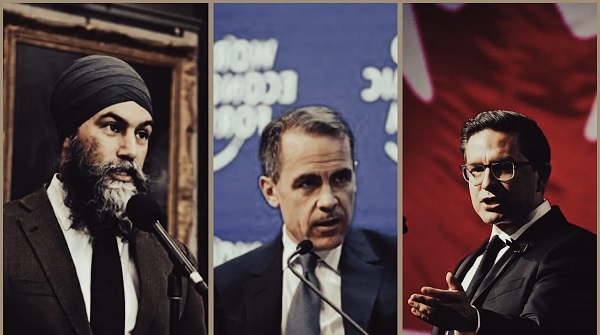
 2025 Federal Election1 day ago
2025 Federal Election1 day agoNDP Floor Crossers May Give Carney A Majority
-
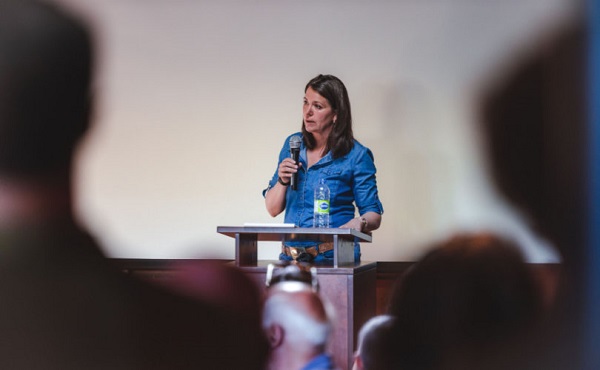
 Alberta2 days ago
Alberta2 days agoPremier Danielle Smith hints Alberta may begin ‘path’ toward greater autonomy after Mark Carney’s win
-

 Business20 hours ago
Business20 hours agoChina’s economy takes a hit as factories experience sharp decline in orders following Trump tariffs
-

 Banks2 days ago
Banks2 days agoTD Bank Account Closures Expose Chinese Hybrid Warfare Threat
-
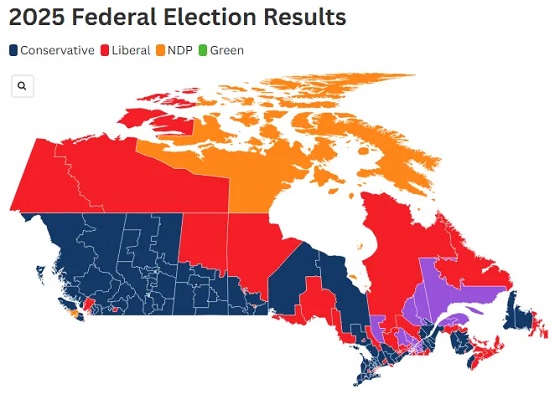
 2025 Federal Election2 days ago
2025 Federal Election2 days agoPost election…the chips fell where they fell
-

 Automotive23 hours ago
Automotive23 hours agoNew federal government should pull the plug on Canada’s EV revolution

